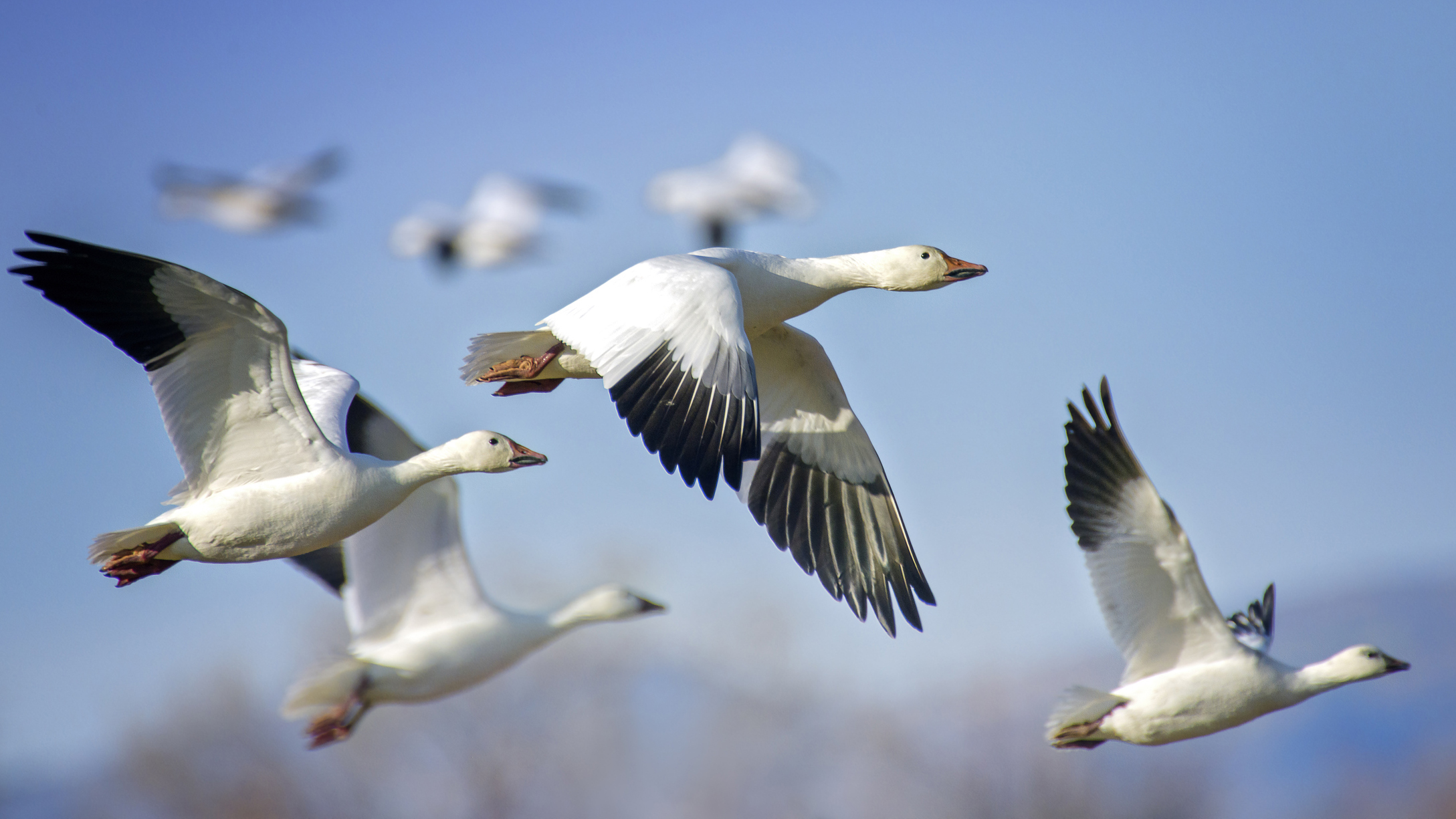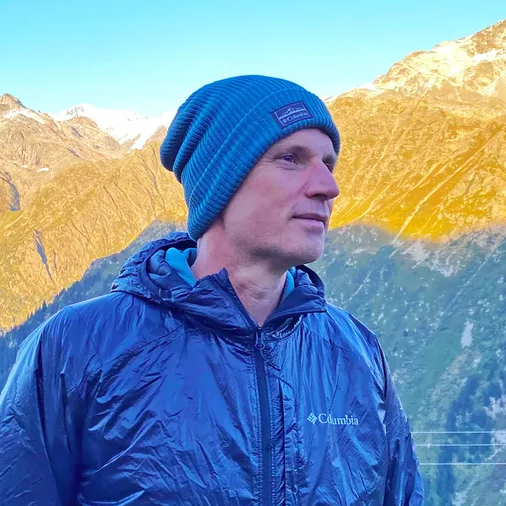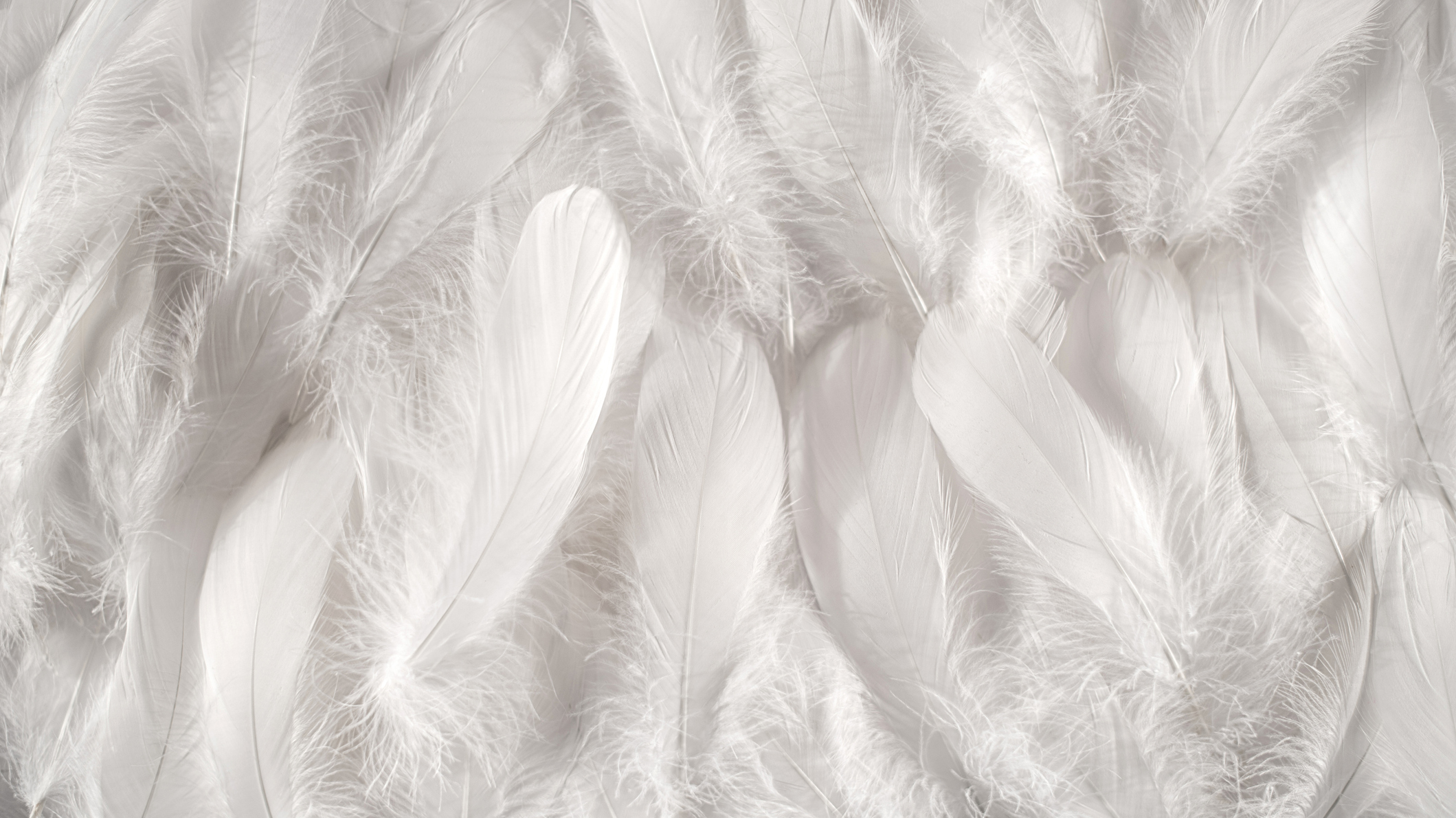Ethical down for jackets and sleeping bags: the vital information
You may feel warm huddled in that down jacket or sumptuous sleeping bag, but are you aware of, or at ease with, where and how the materials have been sourced?

"The birds fly a lot better than we do," says Leslie Howard as R.J. Mitchell in the 1942 film Spitfire. Mitchell was an aircraft designer and leader of the team that created the iconic Submarine Spitfire, a fighter plane that was instrumental in the Allied victory in the Battle of Britain between July and October 1940. "See how they wheel and bank and glide. Perfect. And all in one. Wings, body, tail. All in one."
Despite all our efforts, the birds still fly a lot better than we do. That's because the process of evolution by natural selection is a powerful refiner, creating designs that perform their task perfectly based on the environment they have to work within.
It's not just flying that birds do better – we've long exploited ducks and geese for their down, the soft fluffy layer of undercoat feathers that keeps them warm in frozen environments thanks to their insulating qualities. Again, despite all our efforts to create a synthetic insulation that performs as well as duck or goose down, natural down is often the go to for everyone from hikers and mountaineers to fashionistas.
However, ethical down is a big issue due to the way that ducks and geese are still exploited in many parts of the world. For many, including all vegans and many vegetarians, down-filled products are completely out of the question – and, fortunately, there are increasingly excellent synthetic alternatives out there, which we will get to. But there are also options for people who don’t mind wearing garments made with down sourced more ethically – usually as a byproduct of the meat industry – just as they’re happy to wear leather shoes and coats.
Meet the expert

As Advnture's consulting editor and a veteran gear tester, what Pat doesn't know about outdoor kit isn't worth knowing. He always considers the environmental credentials of any garments he reviews, paying close attention to sustainability. Here, he shines a light on ethical down practices in the outdoor clothing industry.
Today's best deals
What is down?
- Down is the soft fluffy layer of undercoat feathers found beneath the outer feathers on ducks and geese
- It keeps the birds warm in seriously cold climes
- The collection methods of down, particularly in China, are often not ethical
- However, demand for down continues to increase, fuelling its industrialization

Down is the soft fluffy layer of undercoat feathers found beneath the more workmanlike outer feathers on geese and ducks. It’s what keeps the waterfowl warm in the near-Arctic-like conditions they encounter in some of the frostier parts of the planet, where they choose to flock together.
Goose down is generally regarded as the absolute best for the quality of its loft – the amount of air it traps, which then warms up and provides thermal insulation. And goose down from Hungary and Russia, especially Siberia, is said to be best of all.
However, as much as 80% of the down used in modern products now comes from China, where collection methods are opaque at best, and organizations such as PETA commonly report on low levels of ethical compliance in the harvesting of animal-based materials.
All the latest inspiration, tips and guides to help you plan your next Advnture!
Production of down products is not exclusive to the outdoor industry, and it has been going on for centuries – perennially popular eiderdown duvets, for example, are full of down from the eider duck, and they have been keeping people warm in winter for hundreds of years. And of course, indigenous peoples in colder climes have harnessed the insulating power of the leftover parts of the animals they hunt and eat for millennia.
Part of the problem is scale – with human populations growing and the popularity of warm puffy products rising, manufacturing methods became industrialized to meet demand and both quality control and animal welfare suffered as a result.
Cruel collection methods
- The animals can be subjected to extreme levels of pain when the feathers are harvested
The birds would, naturally, prefer to hang on to this down layer, and unfortunately in some places it is harvested in a fashion that can only be described as brutal, including live plucking, where the animals are subjected to extreme levels of pain.
And even where down was being sourced as a meat byproduct, it was often coming from places where birds were being force fed to extreme levels, causing their livers to balloon for the production of foie gras.
Ethical options

- Many companies are working to ensure that the fill used in their products has been sourced as ethically as possible
- After a report revealed some of the horrors the outdoor industry was often unwittingly complicit in, many brands took action
- Standards, like the Responsible Down Standard, are often used these days to indicate that down products have been created in a responsible manner
The good news is that it is entirely possible – if sometimes a bit pricier – to make much more ethical choices when you purchase a puffer jacket or three- or four-season sleeping bag.
You can spend your dough on a down jacket/bag made by a company that has made genuine efforts to ensure that the fill used in their products has been source as ethically as possible.
After a report rocked the industry a decade ago, revealing the hidden horrors that lay in the supply chain of down-filled products being sold by some leading outdoor names, a number of those brands took action, setting up monitoring systems to ensure they would not be unwittingly complicit in such cruelty again.
Over a decade ago, Mountain Equipment set up the Down Codex scheme to constantly audit where materials they were using came from, and how they were being sourced.
And The North Face worked with the Textile Exchange to establish the Responsible Down Standard (RDS), which works to ensure that down and feathers come from animals that have not been subjected to any unnecessary harm, and it rewards good ethical practice, to incentivize high ethical standards. Multiple brands now feature the RDS–certified logo on their labels, websites and product packaging.
Patagonia, who were caught up in the original scandal, have someone in place whose job it is to ensure ethical standards are met all the way back through the supply chain when it comes to sourcing animal products.
Synthetic fill
- Modern synthetic fill is almost as high performing as down
- In some ways, it's superior, as it maintains its thermal qualities when wet
- It's also easier to clean and cheaper
- However, it's made from fossil fuels and won't biodegrade

Another option altogether, of course, is to buy a jacket or sleeping bag made with modern synthetic fill, which is made to such a high standard these days that it’s almost as warm as down. And this isn’t just a good choice for vegans and vegetarians; it also makes a lot of good sense for a range of people for various reasons.
In some respects synthetics actually outperform down. They maintain their thermal properties when wet, for starters (which can make a huge difference), and they’re a lot easier to clean, considerably cheaper to buy, are often far more robust and don’t shed feathers (because they don’t contain any).
But, non-natural fill is far from perfect. Synthetic fabrics such as polyester and nylon are non-biodegradable and they’re made from nonrenewable fossil fuels (oil and petroleum), so have a large carbon footprint. It’s hard work having a conscience.
Do your research
- Before making a purchase, do your research on the brand
- Ensure the product you buy has been certified in one way or another
Whenever purchasing a new product that contains animals products, it is worth perusing the website to see what ethical standards the brands adheres to. As consumers, we wield a large amount of power, and buying cruelty free down jackets and sleeping bags will help you stay warm on the inside and get a better night’s sleep.

Author of Caving, Canyoning, Coasteering…, a recently released book about all kinds of outdoor adventures around Britain, Pat has spent 20 years pursuing stories involving boots, bikes, boats, beers and bruises. En route he’s canoed Canada’s Yukon River, climbed Mont Blanc and Kilimanjaro, skied and mountain biked through the Norwegian Alps, run an ultra across the roof of Mauritius, and set short-lived records for trail-running Australia’s highest peaks and New Zealand’s Great Walks. He’s authored walking guides to Devon and Dorset, and once wrote a whole book about Toilets for Lonely Planet. Follow Pat’s escapades on Strava here and Instagram here.
